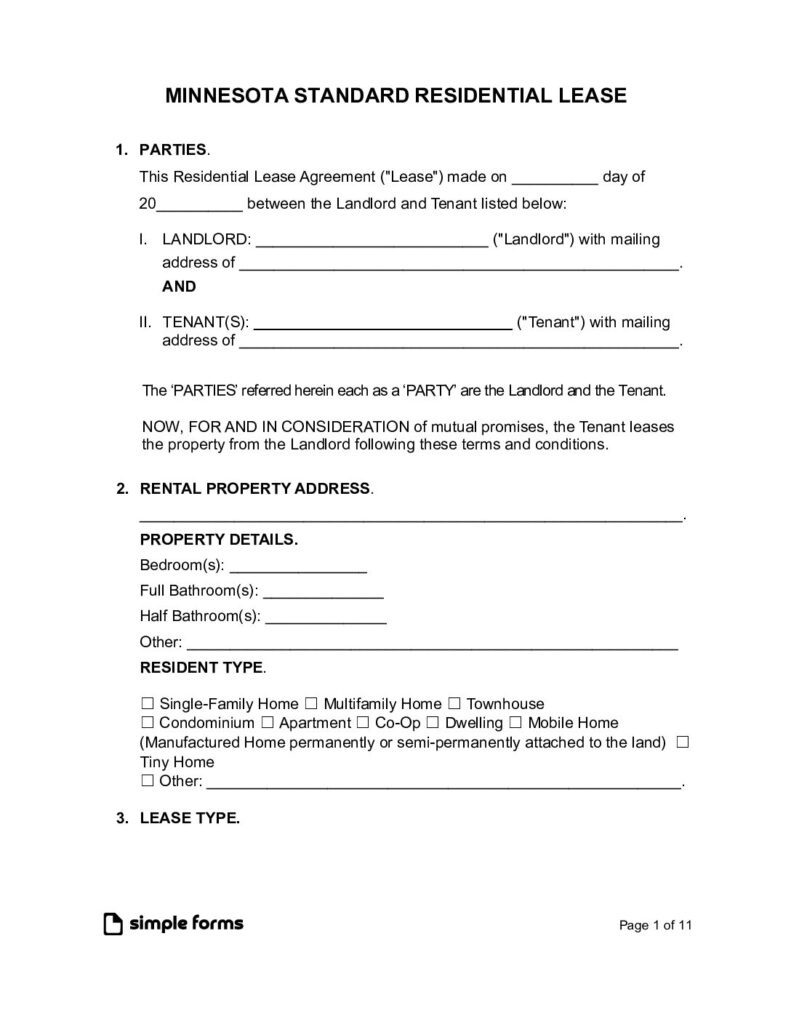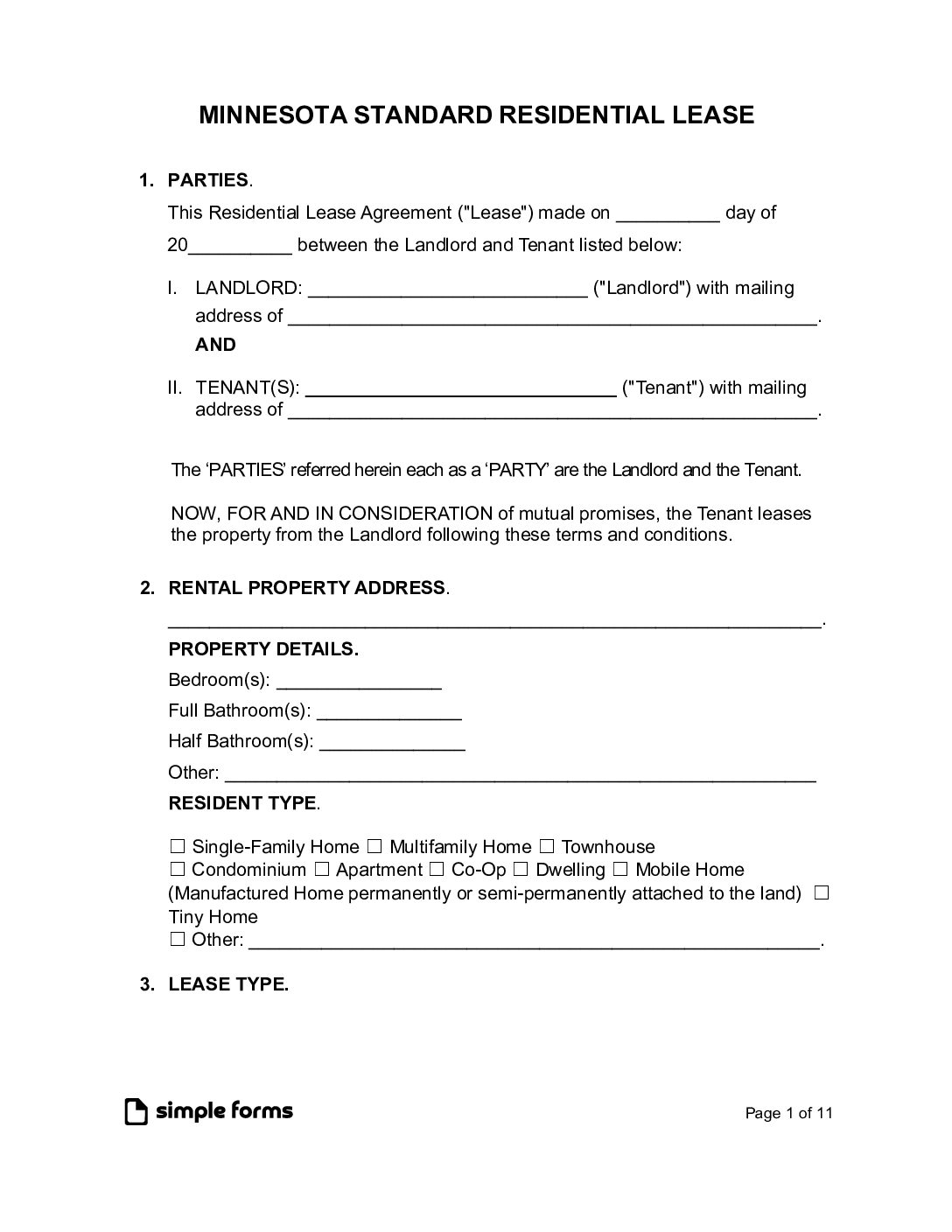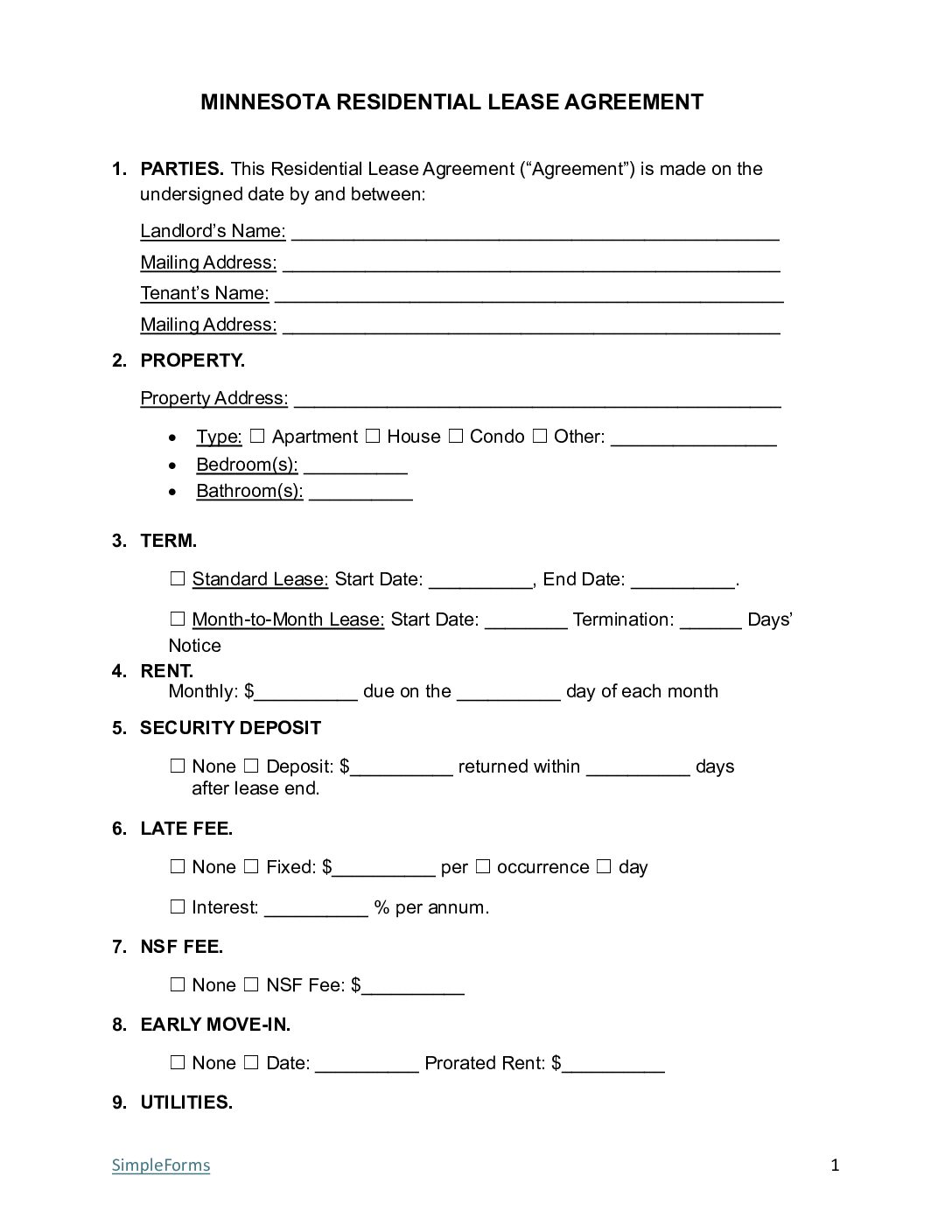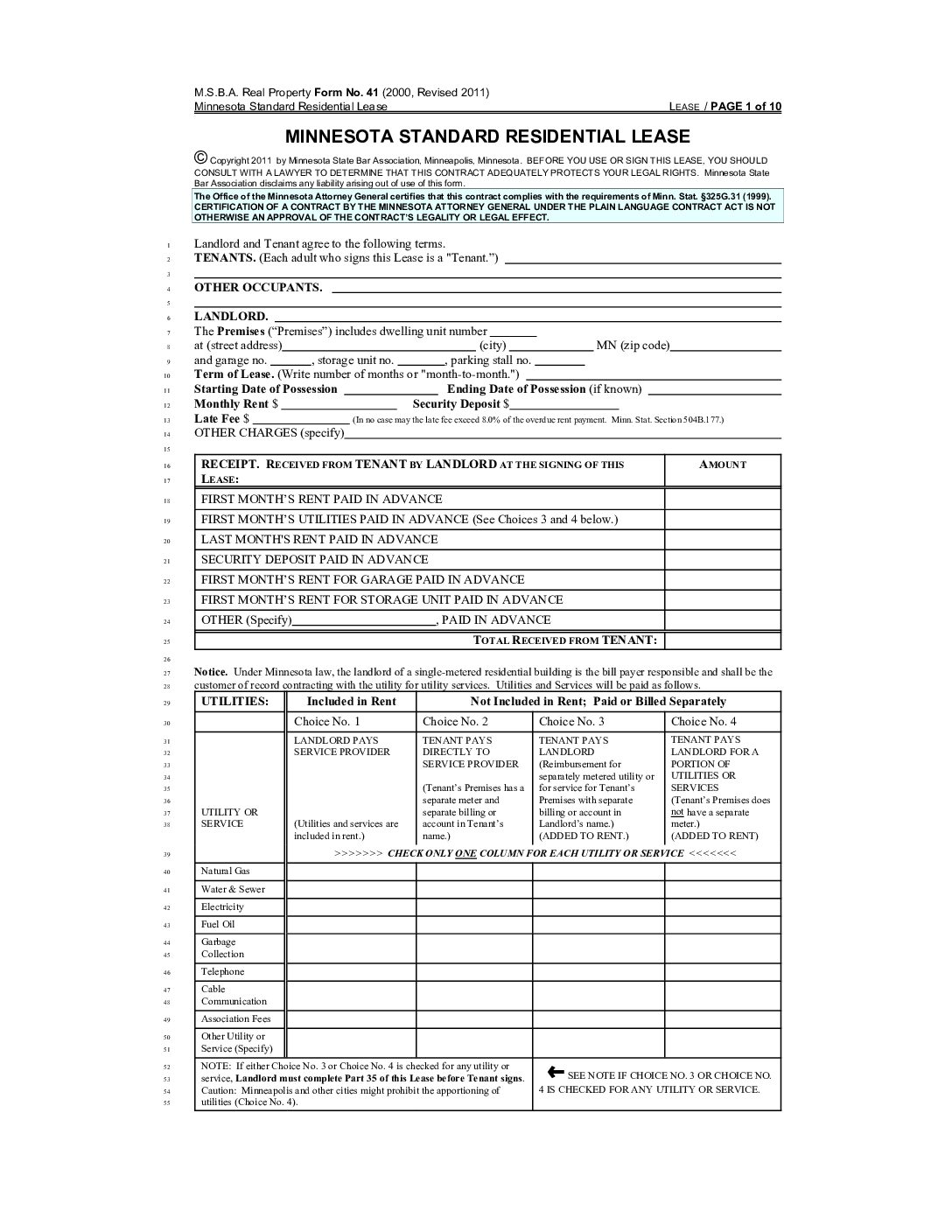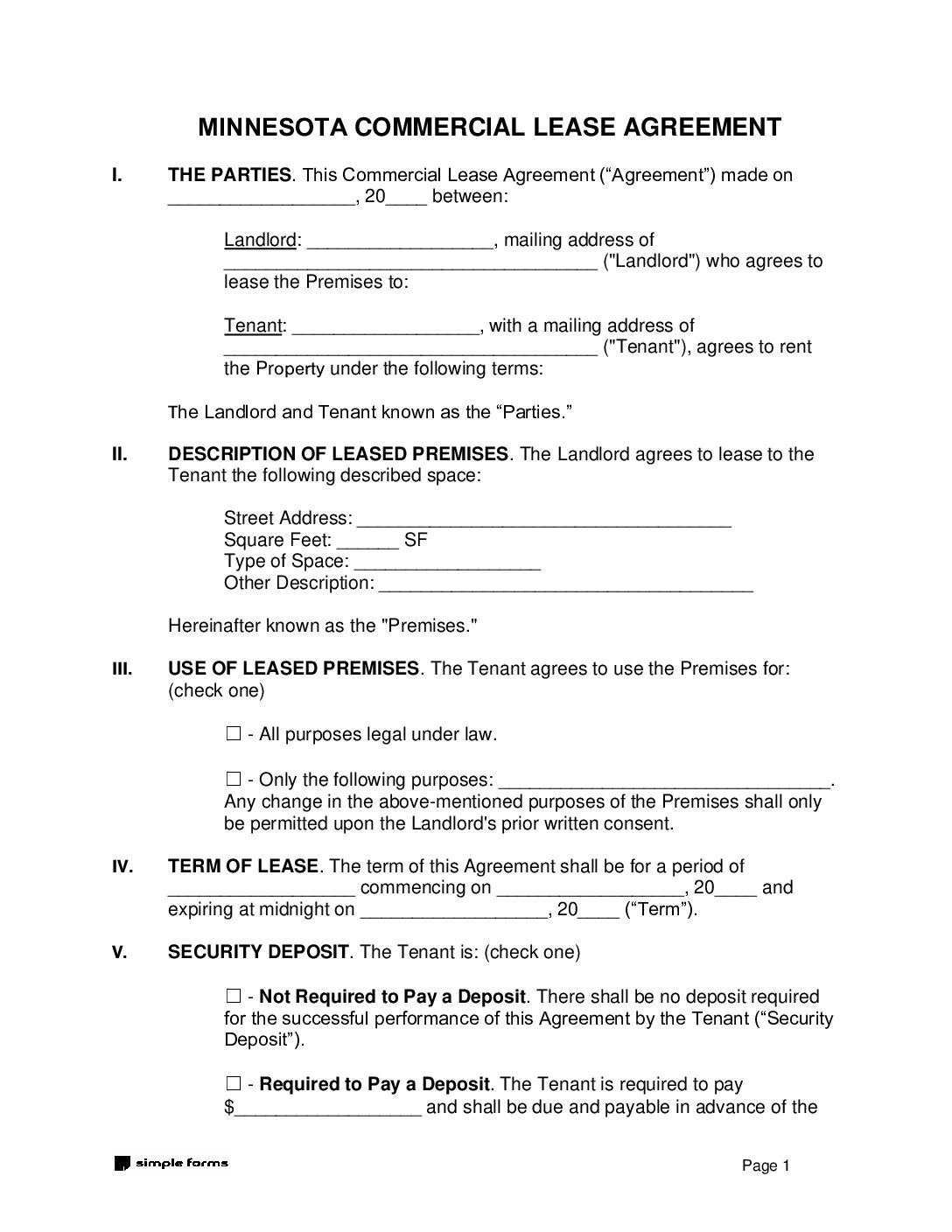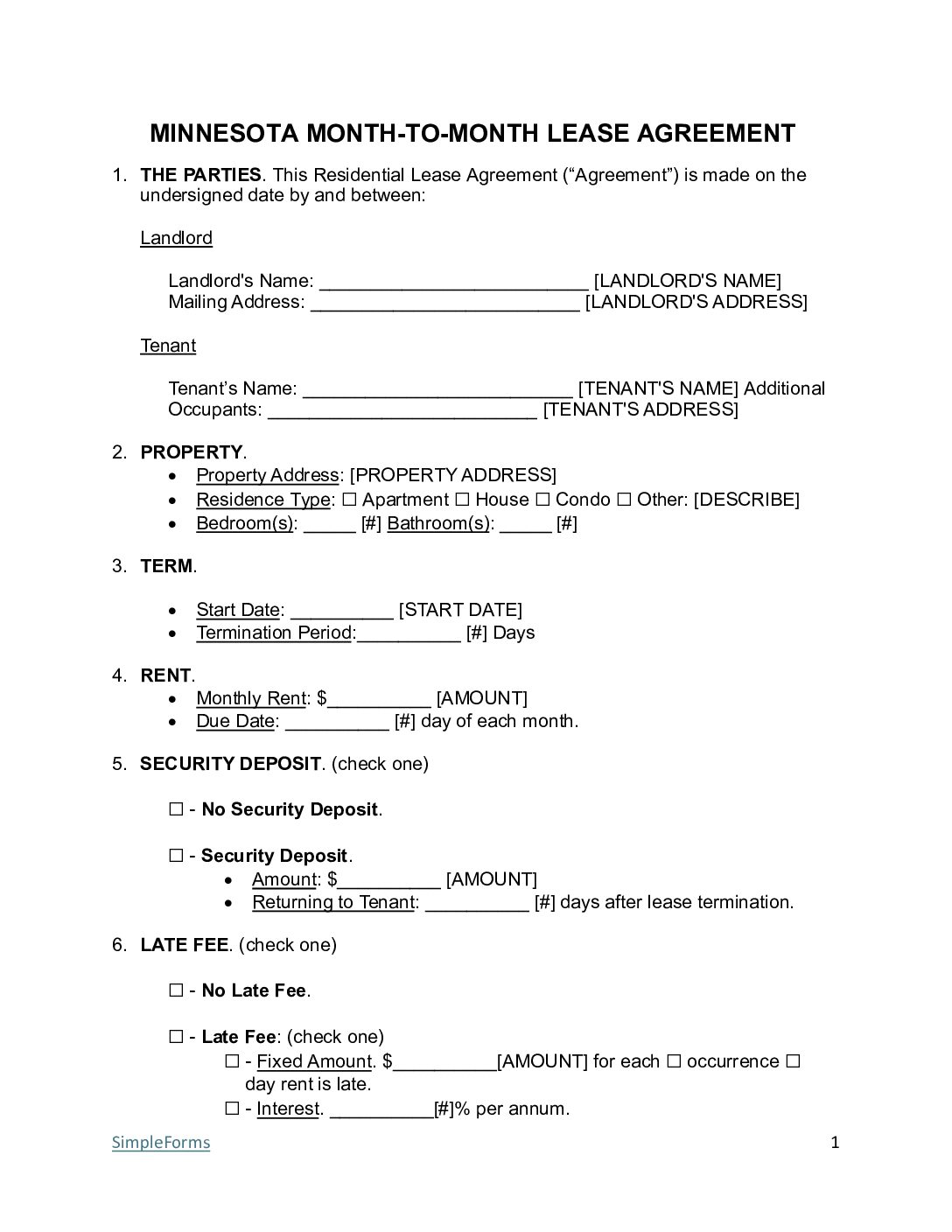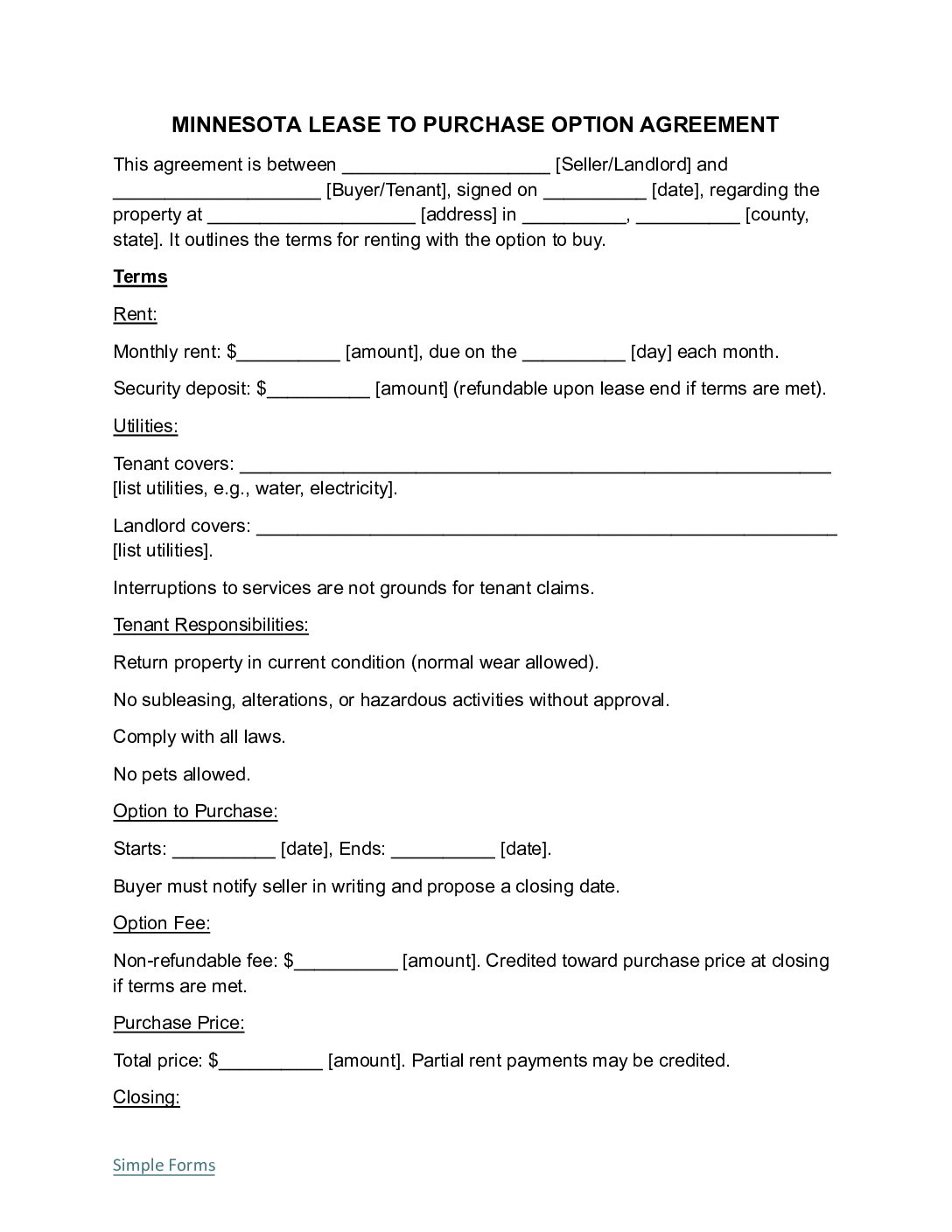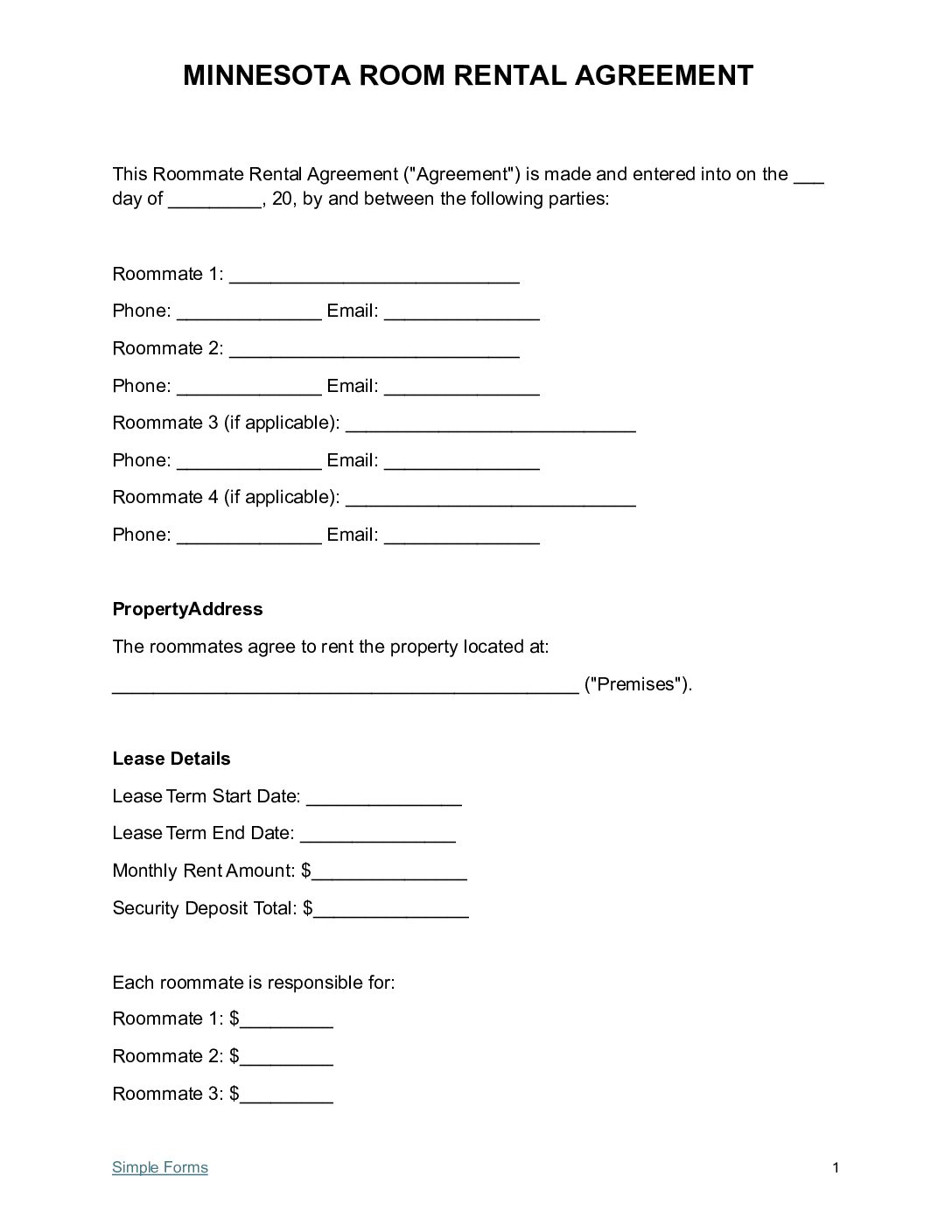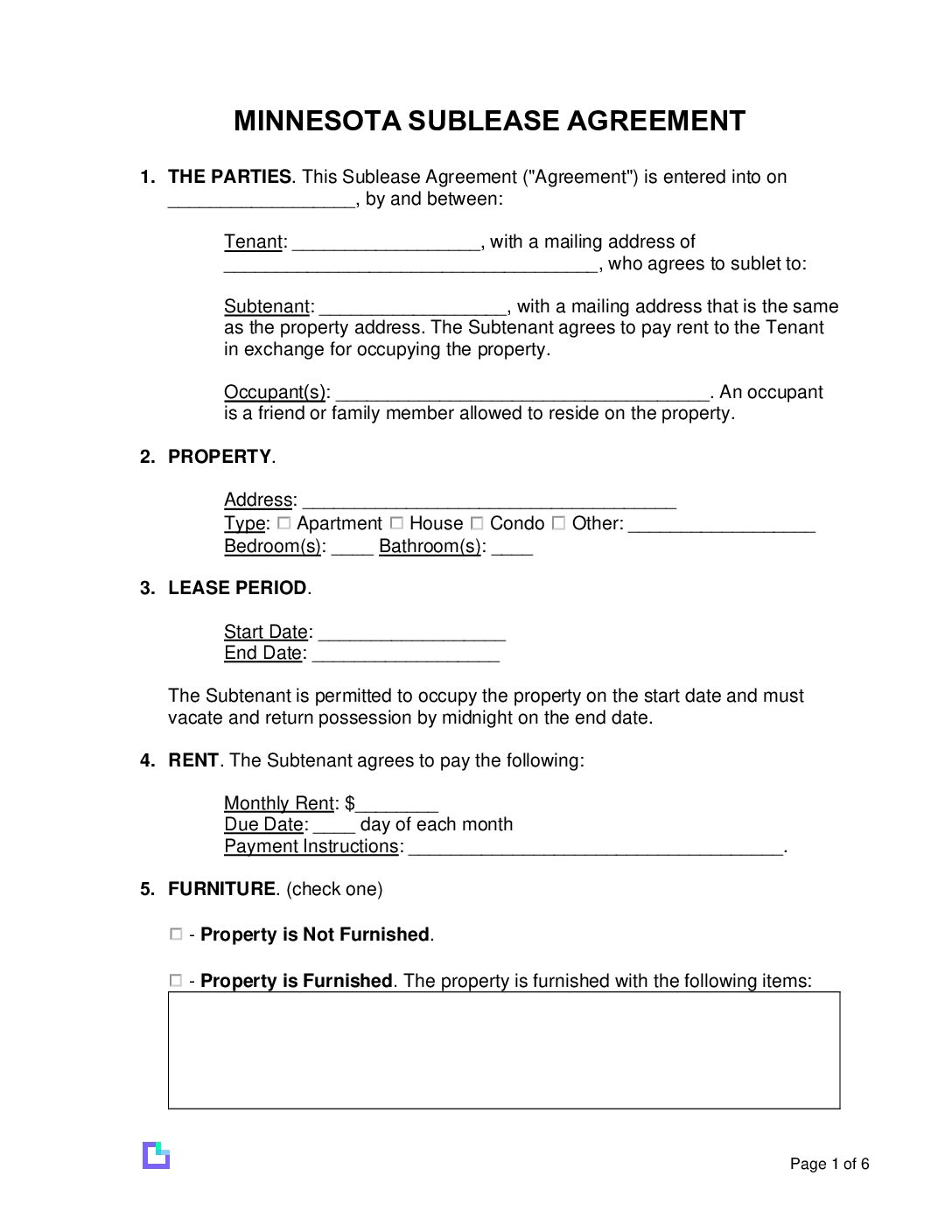By Type
| Residential Lease Agreement – For lease terms that last one-year or more. Download: PDF | Word (.docx) |
|
| BAR Assoc. Lease Agreement (Form No. 41) Download: PDF | Word (.docx) |
|
| Commercial Lease Agreement Download: PDF |
|
| Month-to-Month Lease Agreement Download: PDF | Word (.docx) |
|
| Rent to Own Lease Agreement Download: PDF | Word (.docx) |
|
| Roommate Lease Agreement Download: PDF | Word (.docx) |
|
| Sublease Agreement Download: PDF | Word (.docx) |
What the Minnesota Residential Lease Agreement Form covers?
This agreement includes the following information and laws regarding landlord and tenant relationships, responsibilities and obligations in Minnesota:
- Minnesota Landlord-Tenant Act
- Security Deposit Law
- Lease Termination
- Landlord’s Access to the Property
- Rent Due Date and Late Fees
- Eviction Procedures
- Property Maintenance
- Required Disclosure Forms
Minnesota Landlord-Tenant Act
Security Deposit Law
Summary (§ 504B.178):
- 21 Days – The landlord must return the security deposit within 21 days after the lease ends.
- Itemized List – Deductions for repairs must be provided in an itemized list with the returned deposit.
- Interest – Minnesota requires landlords to pay interest on security deposits.
Lease Termination Rules for Landlords and Tenants
Summary (§ 504B.135): Minnesota law allows both parties to terminate a lease under specific conditions.
- Tenant’s Right to Terminate – Tenants may terminate the lease due to domestic violence, harassment, or if they are called for active duty military service.
Landlord’s Access to the Rental Property
Rent Due Dates and Late Fees
Summary (§ 504B.145):
- Grace Period – Minnesota law does not require a grace period, but landlords can include one in the lease agreement.
- Late Fees – Late fees must be reasonable, with 8% of the rent amount being the maximum late fee amount landlords can charge tenants.
Eviction Procedures and Notices
Property Maintenance Requirements and Utilities
Required Disclosure Forms
Summary: Minnesota landlords must disclose the following information to tenants:
- Lead-Based Paint Disclosure – Required for properties built before 1978 as per federal law.
- Address for Notices (§ 504B.181) – Landlord’s mailing address for receiving tenant notices.
- Covenant of Landlord and Tenant (§ 504B.171) – Not to allow illegal activities on the property.
- Financial Distress (conditional) (§ 504B.151) – The landlord must be transparent with the tenant in the event of a foreclosure. The maximum amount of time tenants can rent a property that is being foreclosed on is two-months.
- Outstanding Inspection (§ 504B.195) – The landlord must disclose a failed inspection to the tenant.
- Disclosure of Fees (§ 504B.120) – The combined total of the rent and all fees should be labeled as the “Total Monthly Payment” on the lease’s first page.
- Option for Mote-in Inspection (conditional) – Landlords must inform tenants of their right to request a move-in inspection, either at the start of the lease or within 14 days.
- Service/Support Animals– No extra fees or deposits for service or support animals.
- Shared-Meter BuildingsLandlords must charge tenants based on actual submeter readings.
